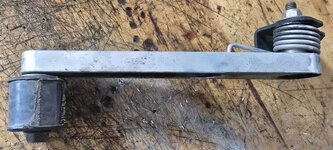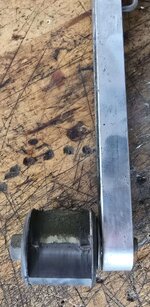Jetfixer
Well-known member
A new customer brought his 2022 F3T to me for an oil change. As part of my regular service, I give the whole bike a good lookover. I found that his (aftermarket) belt idler had a seized roller. The bike has 21000 miles. Luckily, it did not do any significant damage to his drive belt, but it would have soon. These rollers are a normal wear item and need to be checked regularly, and replaced as soon as they show any wear or no longer roll smoothly, to prevent expensive belt damage. This applies to both the factory original idlers, and all the aftermarket ones. All of the wear you see in these photos was caused by rubbing the top surface of his drive belt. This is an easy thing to check on both F3's and RT's. just reach up under the side, lift the arm off of the belt, and feel the roller.
 -
- 
 -
- 
